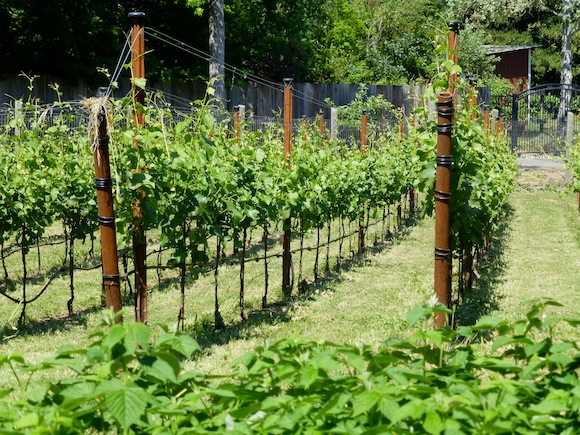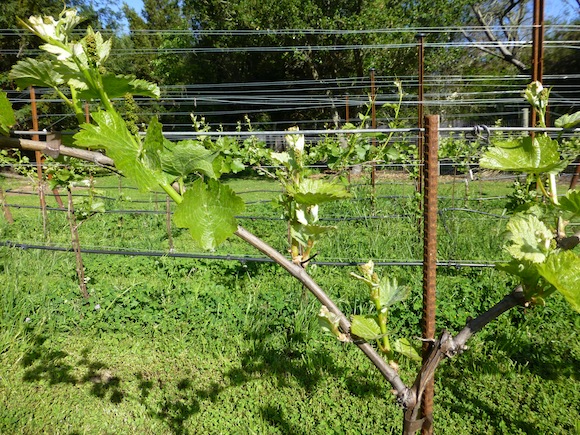Seeing that I’m a farmer now, I get to worry about all sorts of things that I can’t do anything about. A few months ago it was frost…but the spring here was amazing with warm weather, although a not enough rain.
Now is fruit set. As you can see in the picture the grapes flower (the white bursts around the berry) and then they self pollinate and become grapes. Something I didn’t know realize is how few of them become berries. In the case of Pinot noir, only between 30-50% become berries in normal years. So, for the next few weeks we hope the weather is nice and calm with no rain, little wind and nothing really hot or cold. Not much to ask for! As soon as “set” is complete, I can do a crop estimate for our 2013 vintage.
What is next? It is time for shoot positioning. The tedious task of lining up the shoots to give all the grape clusters room to grow but never touch. This is perhaps the most labor intensive job we have, and one of the most important.















